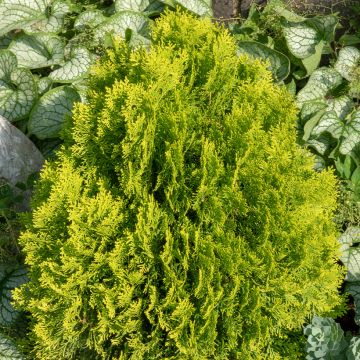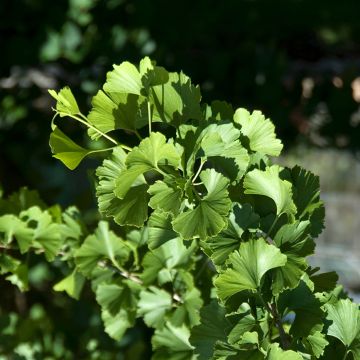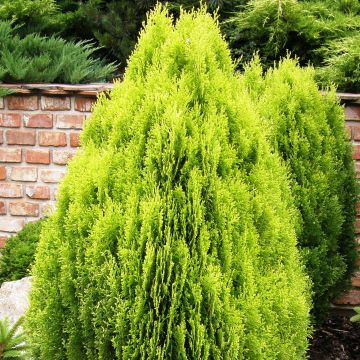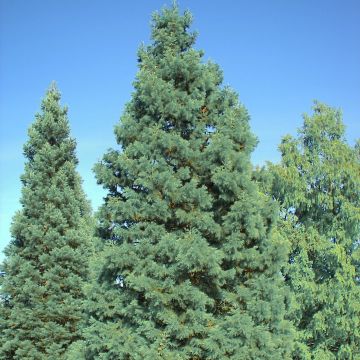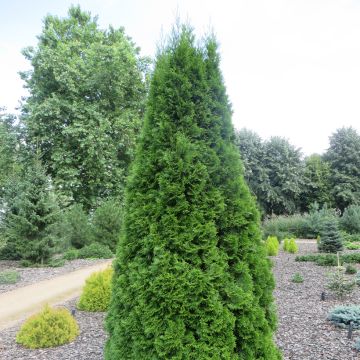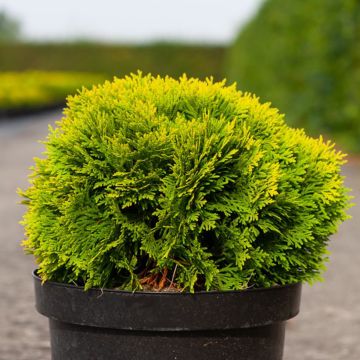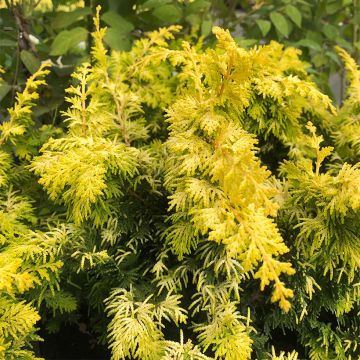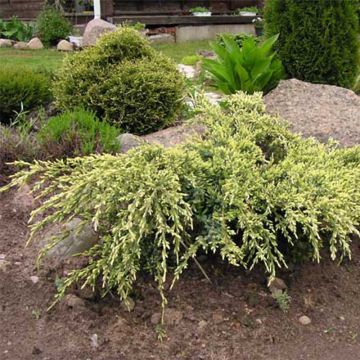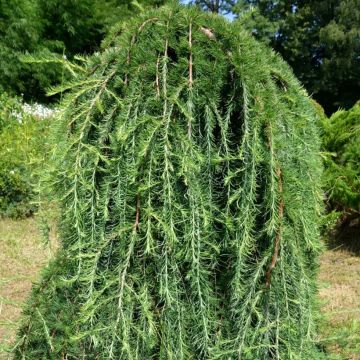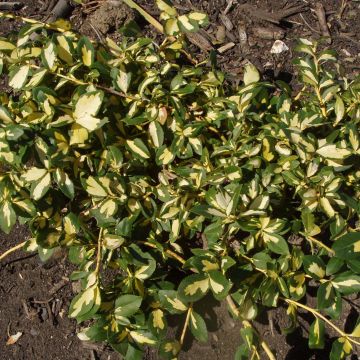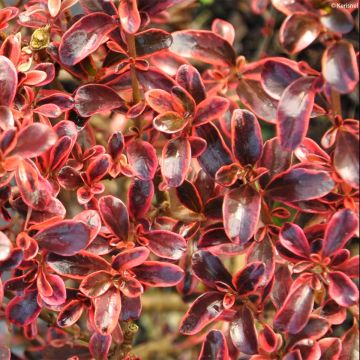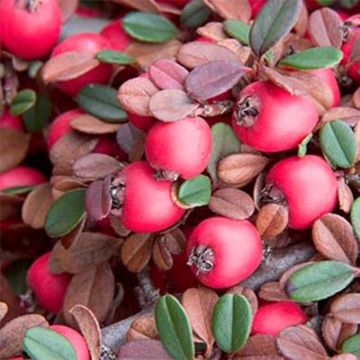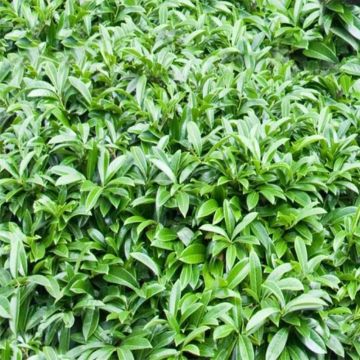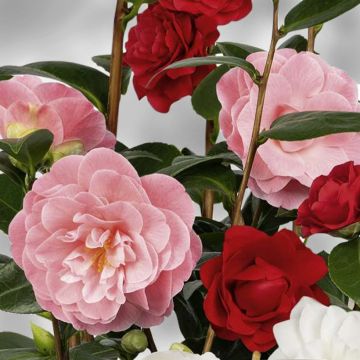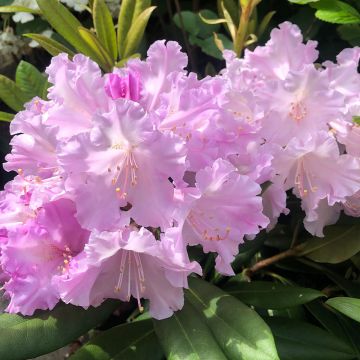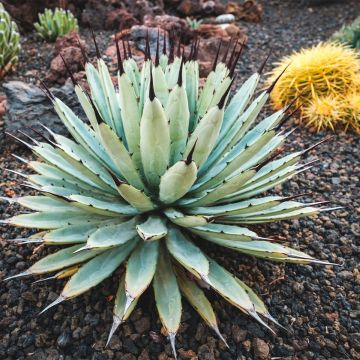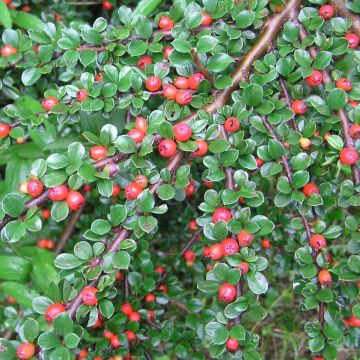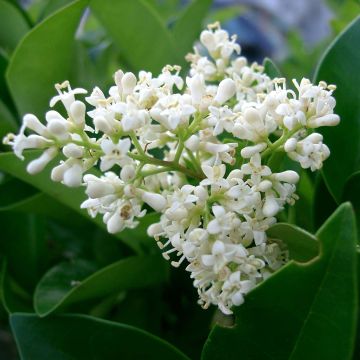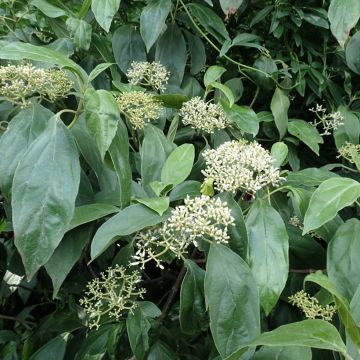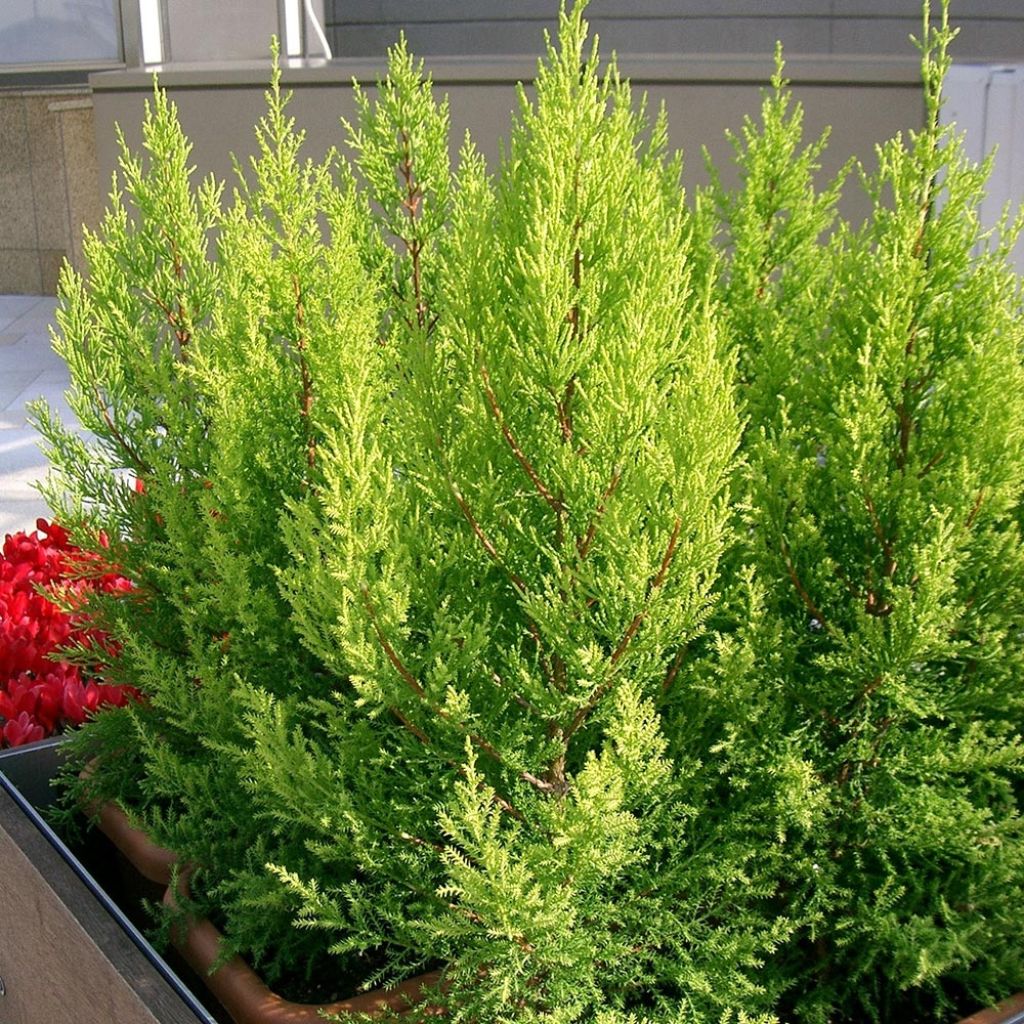

Cupressus macrocarpa Goldcrest
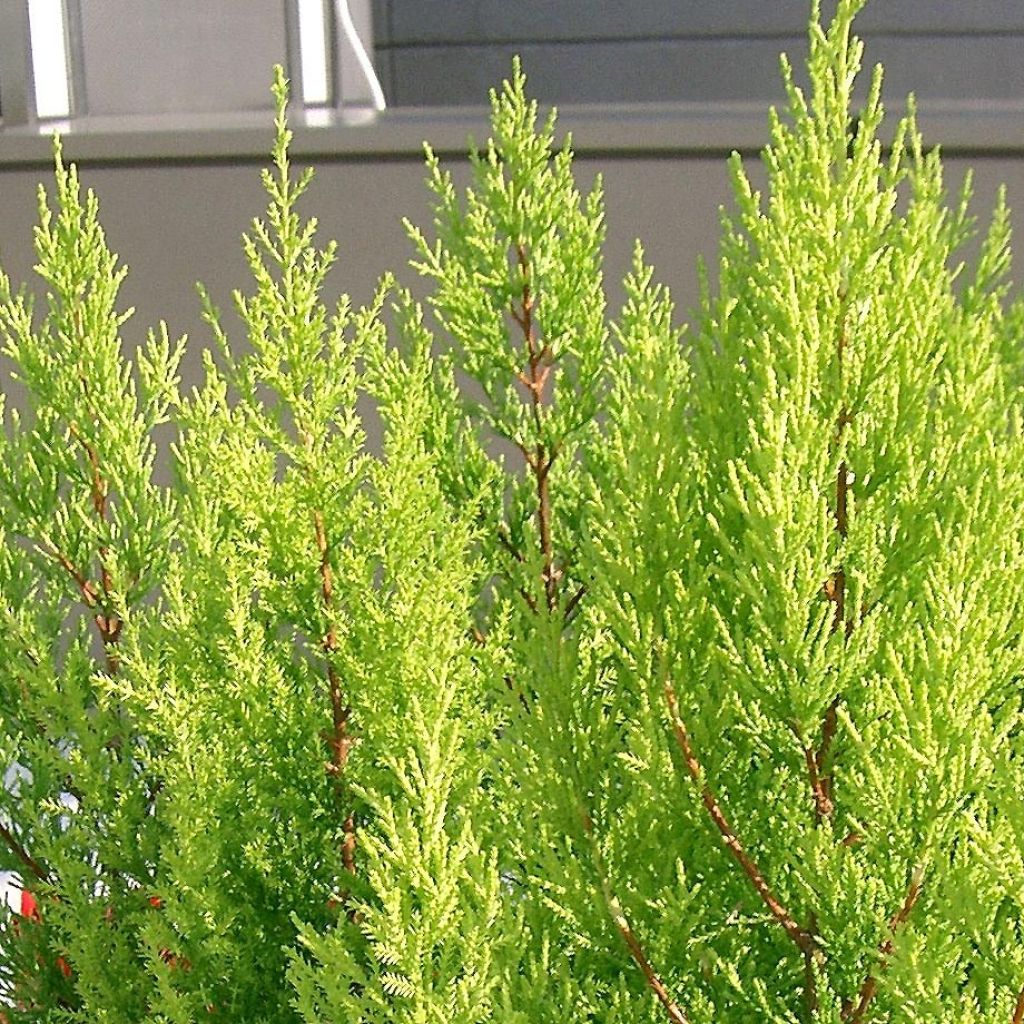

Cupressus macrocarpa Goldcrest
Cupressus macrocarpa Goldcrest
Cupressus macrocarpa Goldcrest
Monterey Cypress, Macrocarpa
Unfortunately, the packaging doesn't keep the bush in place in the box, it arrived with the top broken, to avoid...
Alain, 15/06/2024
This item cannot be shipped to the selected country
Delivery charge from €5.90
More information
Schedule delivery date,
and select date in basket
This plant carries a 24 months recovery warranty
More information
We guarantee the quality of our plants for a full growing cycle, and will replace at our expense any plant that fails to recover under normal climatic and planting conditions.
From €5.90 for pickup delivery and €6.90 for home delivery
Express home delivery from €8.90.
Does this plant fit my garden?
Set up your Plantfit profile →
Description
Cupressus macrocarpa 'Goldcrest' is a variety of Monterey Cypress with small growth, notable for the bright golden colour of its foliage, which becomes bronze in winter. This beautiful conifer has a slender columnar shape or a dense cone shape. It tolerates poor, sandy soils, sea spray, and salty mist. Rocky soils and very dry climates should be avoided. 'Goldcrest' is frost-sensitive and does not tolerate icy winds, so it is preferable to choose a sheltered location for it and protect it during winter.
Cupressus macrocarpa is one of the largest species belonging to the Cupressaceae family. Commonly known as Lambert Cypress or Monterey Cypress, it is a large conifer native to the surroundings of Monterey, a city located on the west coast of the United States. In nature, it is found in forests along the central California coast, where it benefits from the atmospheric humidity and fog that it enjoys. In their native habitat, some specimens reach a height of 36m (118ft) and have a trunk diameter of 2.4m (8ft). Similar to Chamaecyparis, it differs in its rounded branchlets, arranged in tufts around the main axis, and its larger cones with woody scales.
'Goldcrest' rarely exceeds 8m (26ft) in height with a spread of 2.5m (8ft) in our climates. It grows rapidly and has a somewhat coarse foliage when observed up close, which is aromatic when crushed. Its scent is slightly acidic. Its small, blunt triangular leaves are imbricate on short cylindrical branchlets, which are themselves arranged on branches. Young plants less than 1 year old have juvenile needle-shaped leaves. The foliage is golden yellow in spring and turns bronze in autumn. The female cones are globose and green, turning brown at maturity. The reddish-brown bark becomes greyish with age. The root system of this tree is taprooted, allowing it to anchor deeply in the soil to draw water and nutrients and withstand even strong winds. Hardy down to -7°C (19.4°F) in well-drained soil, it should be protected in regions with cold winters.
With its narrow habit and small development, 'Goldcrest' will fit well in any garden, even small ones. It is a boon for very windy coastal gardens with sandy soil, where few trees thrive. Its elegant habit adds structure to a garden in a unique way, whatever its style. With its bright foliage, it will be magnificent when combined with plants with darker foliage, such as dark green or purple. It can also be used as a hedge, like its cousin Leyland Cypress; however, this would stunt 'Goldcrest'. Monterey Cypress is an elegant, undemanding, and vigorous conifer that thrives in regions with cool summers and humid, mild winters.
Report an error about the product description
Cupressus macrocarpa Goldcrest in pictures
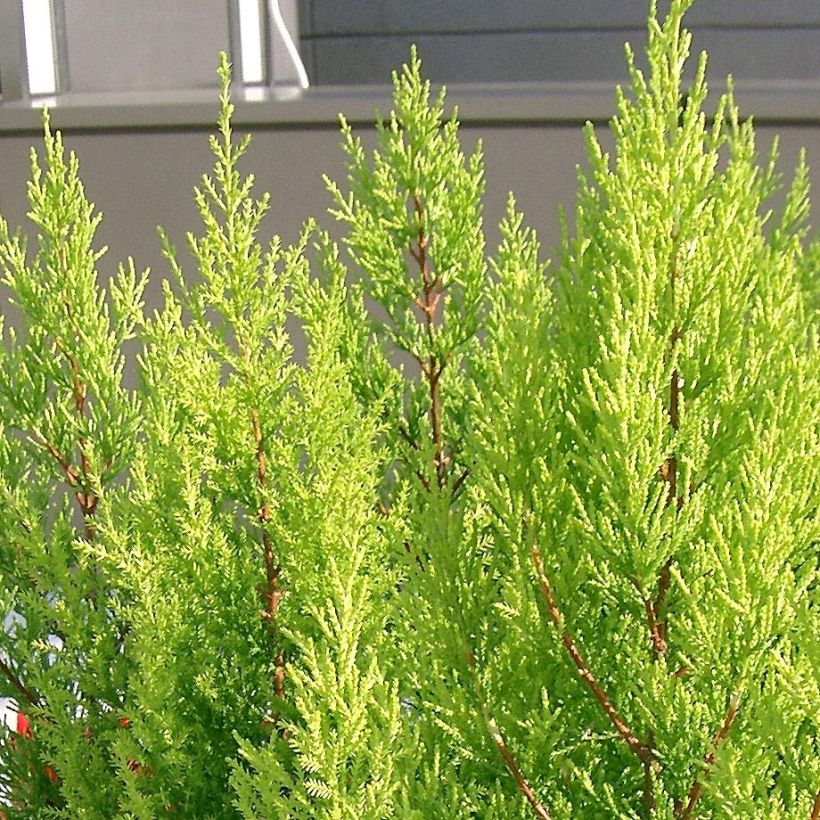

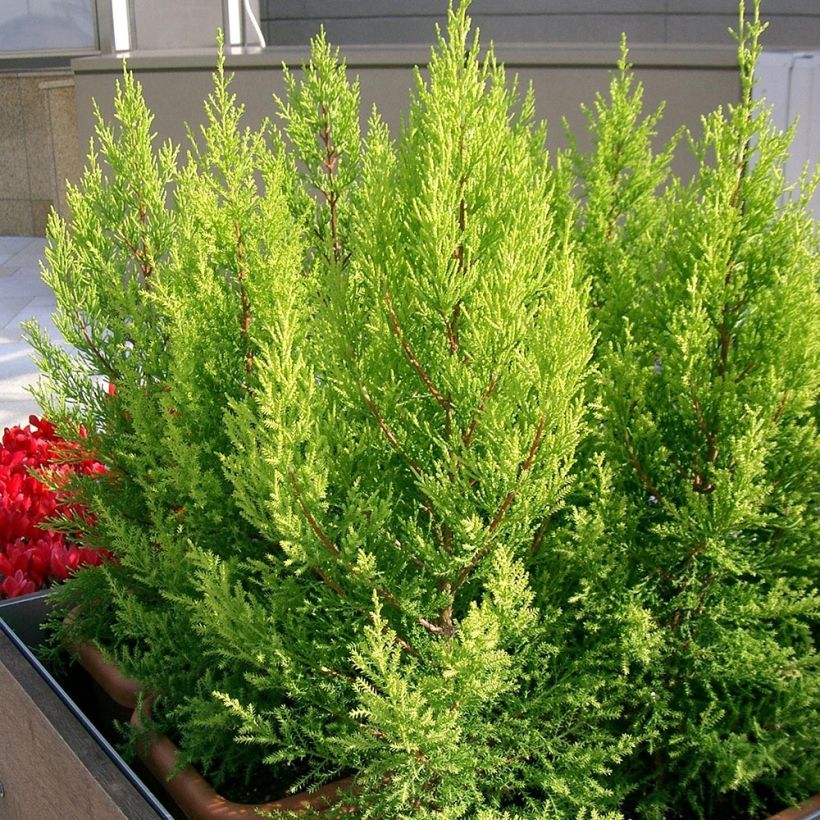

Plant habit
Flowering
Foliage
Safety measures
Botanical data
Cupressus
macrocarpa
Goldcrest
Cupressaceae
Monterey Cypress, Macrocarpa
Cultivar or hybrid
atteinterespiratoire
Cette plante peut entraîner des symptômes allergiques.
Evitez de la planter si vous ou vos proches souffrez de rhinite saisonnière ("rhume des foins").
Davantage d'informations sur https://plantes-risque.info
Other Conifers A to Z
Planting and care
Plant in a sunny position in sandy, poor, or limestone, soil that is well-drained and deep, as its taproot will need to go down to find water and ensure a good anchorage for its tall stature. Choose its location carefully, as this large main taproot does not at all appreciate being disturbed or broken. It will be happier in regions with mild winters. An adult subject will be hardy to -7°C (19.4°F), so will need to be protected during cold winters.
Trees planted in isolation naturally take on a remarkable silhouette, which should not be pruned. On the other hand, those used in hedges can be sparingly pruned. It should be noted here that cypresses dislike pruning, which makes them susceptible to diseases and condemns them in the long run.
This conifer can be subject to canker (a pathogenic fungus), especially if it is subjected to repeated pruning or injuries. Its most common parasites are red spider mites, aphids, scale insects, and jewel beetles, which are virulent in hot and dry weather; it is advisable to spray the foliage with water in hot and dry weather to prevent mite proliferation.
Multiplication:
By sowing seeds in spring or summer. To break the dormancy of the seeds, expose them to cold for at least 3 months.
Planting period
Intended location
Care
-
, onOrder confirmed
Reply from on Promesse de fleurs
Evergreen shrubs
Haven't found what you were looking for?
Hardiness is the lowest winter temperature a plant can endure without suffering serious damage or even dying. However, hardiness is affected by location (a sheltered area, such as a patio), protection (winter cover) and soil type (hardiness is improved by well-drained soil).

Photo Sharing Terms & Conditions
In order to encourage gardeners to interact and share their experiences, Promesse de fleurs offers various media enabling content to be uploaded onto its Site - in particular via the ‘Photo sharing’ module.
The User agrees to refrain from:
- Posting any content that is illegal, prejudicial, insulting, racist, inciteful to hatred, revisionist, contrary to public decency, that infringes on privacy or on the privacy rights of third parties, in particular the publicity rights of persons and goods, intellectual property rights, or the right to privacy.
- Submitting content on behalf of a third party;
- Impersonate the identity of a third party and/or publish any personal information about a third party;
In general, the User undertakes to refrain from any unethical behaviour.
All Content (in particular text, comments, files, images, photos, videos, creative works, etc.), which may be subject to property or intellectual property rights, image or other private rights, shall remain the property of the User, subject to the limited rights granted by the terms of the licence granted by Promesse de fleurs as stated below. Users are at liberty to publish or not to publish such Content on the Site, notably via the ‘Photo Sharing’ facility, and accept that this Content shall be made public and freely accessible, notably on the Internet.
Users further acknowledge, undertake to have ,and guarantee that they hold all necessary rights and permissions to publish such material on the Site, in particular with regard to the legislation in force pertaining to any privacy, property, intellectual property, image, or contractual rights, or rights of any other nature. By publishing such Content on the Site, Users acknowledge accepting full liability as publishers of the Content within the meaning of the law, and grant Promesse de fleurs, free of charge, an inclusive, worldwide licence for the said Content for the entire duration of its publication, including all reproduction, representation, up/downloading, displaying, performing, transmission, and storage rights.
Users also grant permission for their name to be linked to the Content and accept that this link may not always be made available.
By engaging in posting material, Users consent to their Content becoming automatically accessible on the Internet, in particular on other sites and/or blogs and/or web pages of the Promesse de fleurs site, including in particular social pages and the Promesse de fleurs catalogue.
Users may secure the removal of entrusted content free of charge by issuing a simple request via our contact form.
The flowering period indicated on our website applies to countries and regions located in USDA zone 8 (France, the United Kingdom, Ireland, the Netherlands, etc.)
It will vary according to where you live:
- In zones 9 to 10 (Italy, Spain, Greece, etc.), flowering will occur about 2 to 4 weeks earlier.
- In zones 6 to 7 (Germany, Poland, Slovenia, and lower mountainous regions), flowering will be delayed by 2 to 3 weeks.
- In zone 5 (Central Europe, Scandinavia), blooming will be delayed by 3 to 5 weeks.
In temperate climates, pruning of spring-flowering shrubs (forsythia, spireas, etc.) should be done just after flowering.
Pruning of summer-flowering shrubs (Indian Lilac, Perovskia, etc.) can be done in winter or spring.
In cold regions as well as with frost-sensitive plants, avoid pruning too early when severe frosts may still occur.
The planting period indicated on our website applies to countries and regions located in USDA zone 8 (France, United Kingdom, Ireland, Netherlands).
It will vary according to where you live:
- In Mediterranean zones (Marseille, Madrid, Milan, etc.), autumn and winter are the best planting periods.
- In continental zones (Strasbourg, Munich, Vienna, etc.), delay planting by 2 to 3 weeks in spring and bring it forward by 2 to 4 weeks in autumn.
- In mountainous regions (the Alps, Pyrenees, Carpathians, etc.), it is best to plant in late spring (May-June) or late summer (August-September).
The harvesting period indicated on our website applies to countries and regions in USDA zone 8 (France, England, Ireland, the Netherlands).
In colder areas (Scandinavia, Poland, Austria...) fruit and vegetable harvests are likely to be delayed by 3-4 weeks.
In warmer areas (Italy, Spain, Greece, etc.), harvesting will probably take place earlier, depending on weather conditions.
The sowing periods indicated on our website apply to countries and regions within USDA Zone 8 (France, UK, Ireland, Netherlands).
In colder areas (Scandinavia, Poland, Austria...), delay any outdoor sowing by 3-4 weeks, or sow under glass.
In warmer climes (Italy, Spain, Greece, etc.), bring outdoor sowing forward by a few weeks.

































